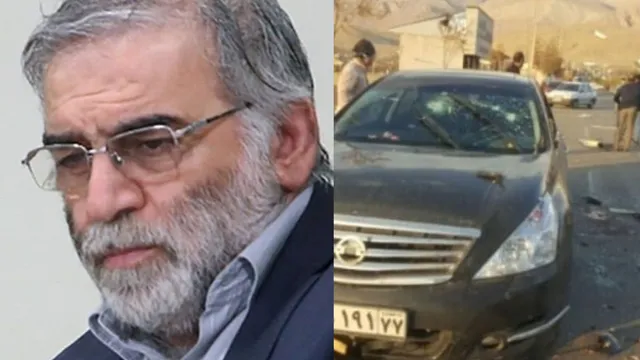- By Shivangi Sharma
- Wed, 18 Jun 2025 07:22 PM (IST)
- Source:JND
As tensions escalate between Israel and Iran, with Israeli leaders issuing veiled assassination threats against Supreme Leader Ayatollah Ali Khamenei, renewed attention has been drawn to one of the most sophisticated assassinations in recent history, the killing of Iran’s top nuclear scientist Mohsen Fakhrizadeh in November 2020. The operation, widely attributed to Israel's Mossad intelligence agency, reportedly involved the use of artificial intelligence and a remote-controlled machine gun.
Fakhrizadeh was traveling near the town of Absard, east of Tehran, when his convoy came under attack. According to detailed reports from The Jewish Chronicle and The New York Times, a one-ton automated weapon system was hidden in a parked Nissan pickup truck on the side of the road. Controlled remotely by Mossad agents operating from outside Iran, the gun opened fire with deadly precision.
The device had been smuggled into Iran in pieces and assembled covertly by agents, including local collaborators. Surveillance and planning for the mission spanned months, with over 20 individuals involved. Artificial intelligence was used to manage the challenges of timing, vehicle speed, and weapon recoil from thousands of miles away.
ALSO READ: Did Nijjar Case Come Up In Bilateral Talks With PM Modi? Canadian PM Mark Carney Responds | WATCH
As Fakhrizadeh’s car slowed down at a speed bump, the gun identified him and fired. He was struck multiple times and later died in hospital. No one else was injured in the attack, underscoring the precision of the weapon.
Strategic Timing And Global Implications
The operation came at a politically sensitive moment. Israel reportedly feared that a potential Biden presidency would revive the Iran nuclear deal (JCPOA), which the Trump administration had abandoned. Fakhrizadeh was seen as the mastermind behind Iran’s nuclear ambitions and a symbolic target.
The attack not only shocked Iran but also showcased the advancement of remote warfare. While Iran blamed Israel, no group officially claimed responsibility. Israel maintained its policy of ambiguity.
Aftermath And Investigations
Following the assassination, Iranian authorities launched a wide-scale investigation, stopping vehicles across Tehran. Several suspects were detained, though little detail has emerged. One suspect was reportedly affiliated with Iran’s military but was dismissed prior to formal induction. This fueled speculation about internal complicity and intelligence lapses.

